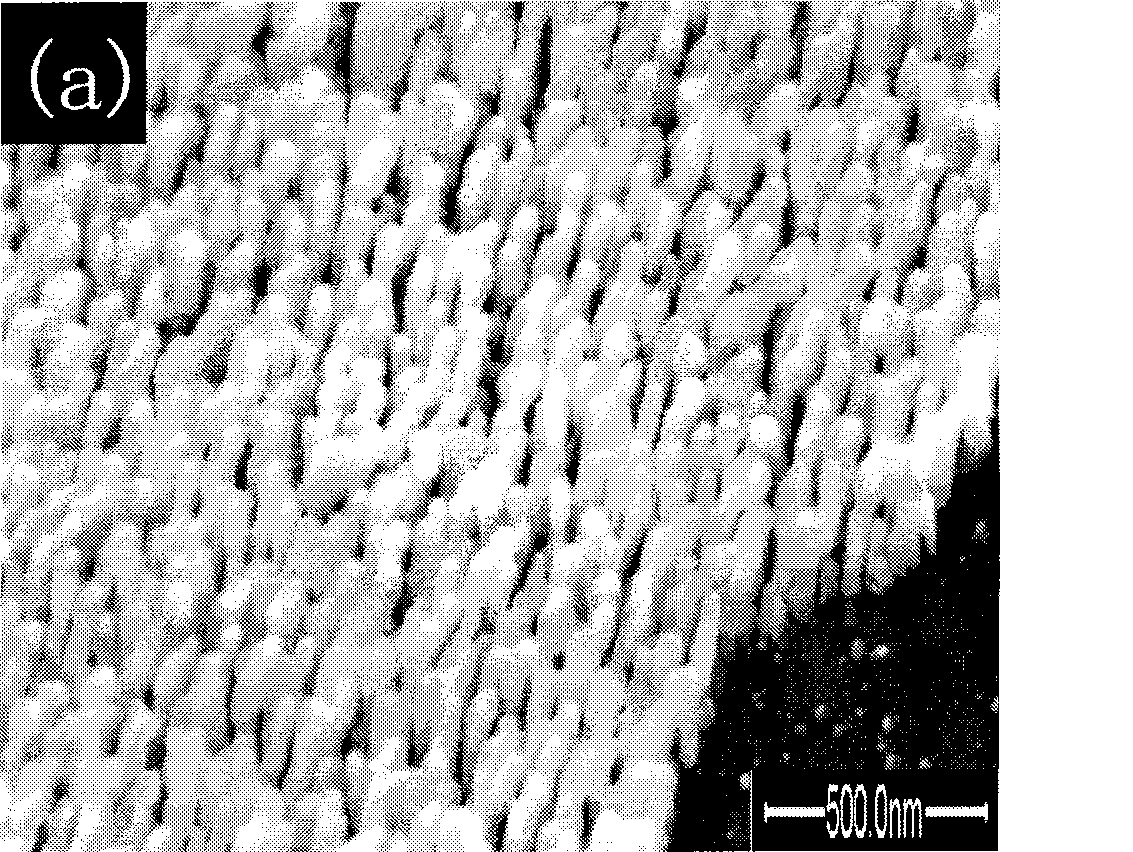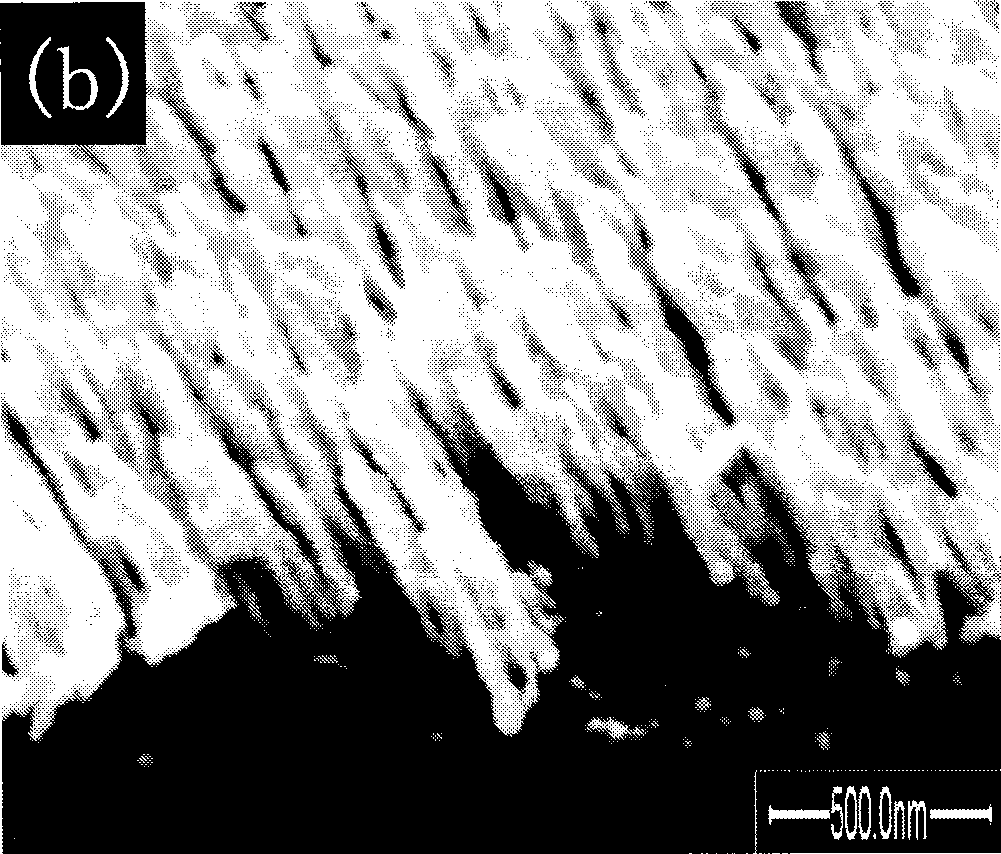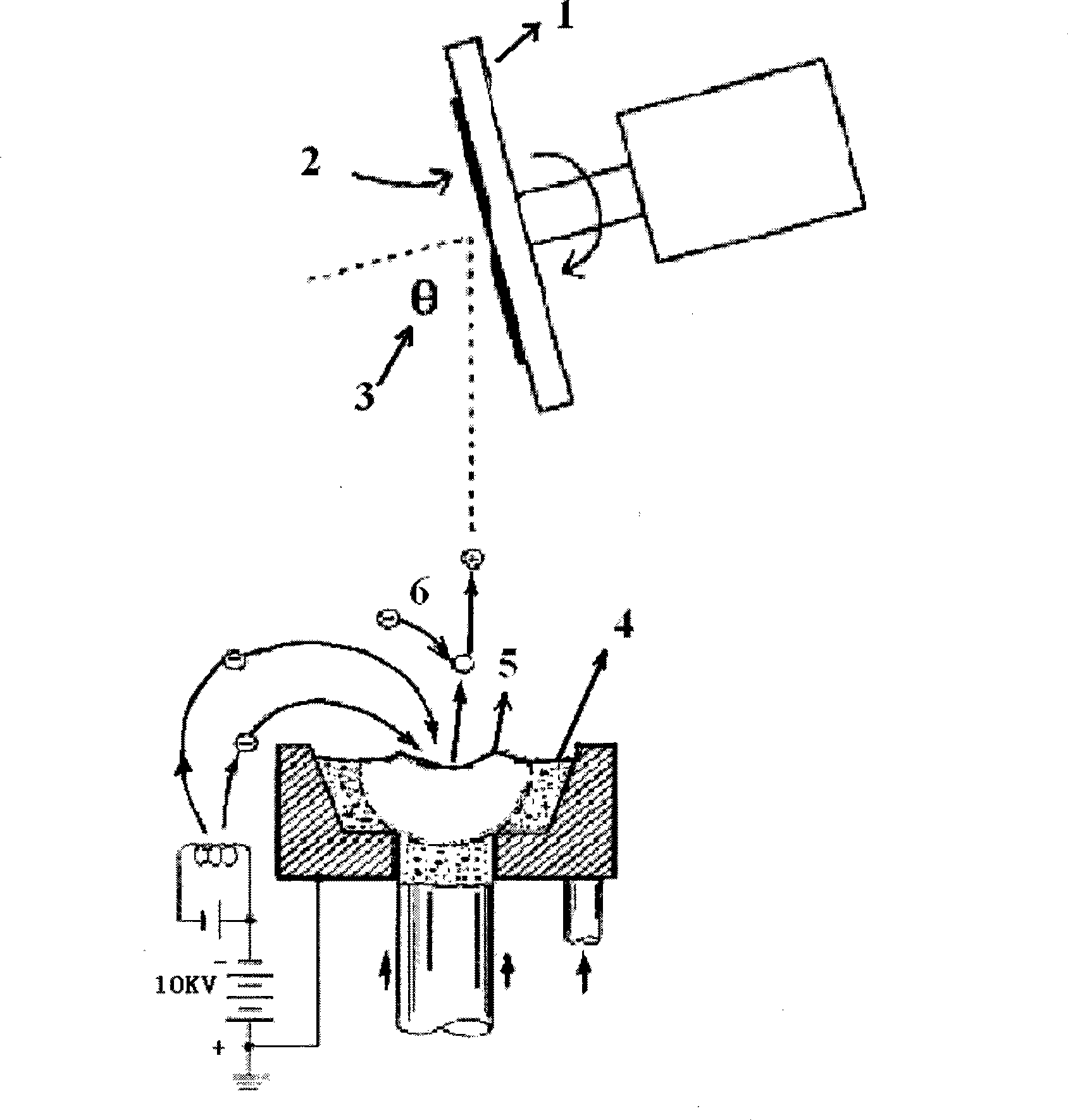Method for rapidly detecting trace amount pentachlorinated biphenyl
A pentachlorobiphenyl and trace technology, applied in Raman scattering, material excitation analysis, etc., can solve the problems of trace detection difficulties and achieve high sensitivity, low cost and simple method
- Summary
- Abstract
- Description
- Claims
- Application Information
AI Technical Summary
Problems solved by technology
Method used
Image
Examples
Embodiment 1
[0026] 1. Ultrasonic cleaning the silicon substrate with acetone, alcohol, and deionized water one by one and drying it;
[0027] 2. Fix the pretreated substrate 1 on the sample stage of the electron beam evaporation coating machine;
[0028] 3. Using metallic silver as the target material, the target material is image 3 Medium solid matter 4 and molten matter 5, the chamber of the electron beam evaporation coating machine is pumped to 3×10 -5 Pa high vacuum;
[0029] 4. Use liquid nitrogen to reduce the temperature of the sample stage to 230K;
[0030] 5. Adjust the incident angle of the electron beam 6 from 3 to 80 degrees, and rotate the sample stage at a rate of 0.2rpm, and grow a 500nm thick silver deposition film 2 obliquely on the substrate 1 of the sample stage;
[0031] 6. Dissolve the trace amount of pentachlorobiphenyl to be measured in acetone;
[0032] 7. Put the surface-enhanced Raman substrate prepared in steps 1 to 5 into the solution to be tested prepared...
Embodiment 2
[0036] 1. Clean the glass substrate one by one with acetone, alcohol and deionized water ultrasonically and dry it;
[0037] 2. Fix the pretreated substrate 1 on the sample stage of the electron beam evaporation coating machine;
[0038] 3. Using metallic silver as the target material, the target material is image 3 Medium solid matter 4 and molten matter 5, the chamber of the electron beam evaporation coating machine is pumped to 3×10 -5 Pa high vacuum;
[0039] 4. Use liquid nitrogen to reduce the temperature of the sample stage to 230K;
[0040] 5. Adjust the incident angle of the electron beam 6 from 3 to 85 degrees, and make the sample stage stationary, and grow an 800nm thick silver deposition film 2 obliquely on the substrate 1 of the sample stage;
[0041] 6. Dissolve the trace amount of pentachlorobiphenyl to be measured in acetone;
[0042] 7. Use a micropipette to drop 2 μL of the solution to be tested prepared in step 6 onto the surface-enhanced Raman substr...
PUM
| Property | Measurement | Unit |
|---|---|---|
| Wavelength | aaaaa | aaaaa |
| Wavelength | aaaaa | aaaaa |
Abstract
Description
Claims
Application Information
 Login to View More
Login to View More - R&D
- Intellectual Property
- Life Sciences
- Materials
- Tech Scout
- Unparalleled Data Quality
- Higher Quality Content
- 60% Fewer Hallucinations
Browse by: Latest US Patents, China's latest patents, Technical Efficacy Thesaurus, Application Domain, Technology Topic, Popular Technical Reports.
© 2025 PatSnap. All rights reserved.Legal|Privacy policy|Modern Slavery Act Transparency Statement|Sitemap|About US| Contact US: help@patsnap.com



